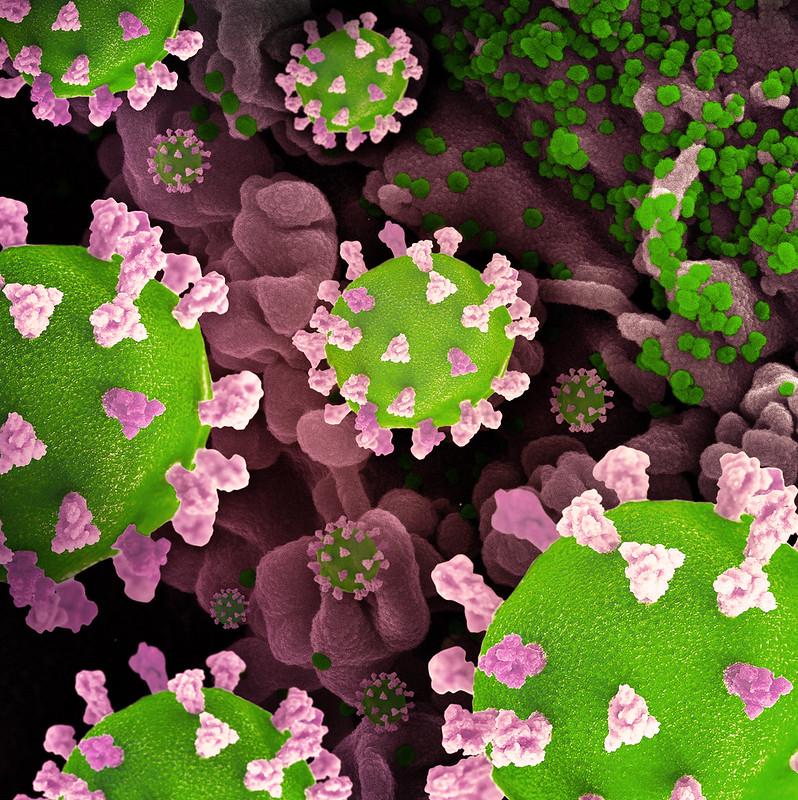With levels still very low, some indicators federal health officials use to track COVID-19 activity, such as hospitalizations and emergency department (ED) visits showed more small rises, according to the latest data from the Centers for Disease Control and Prevention (CDC).
Meanwhile, in its latest variant proportion update, the EG.5.1 Omicron subvariant, a descendant of XBB.1.9.2, continues its steady rise.
Most markers show more small rises for fourth straight week
Hospitalizations—one of the main markers—were up 12.1% compared to a week ago. However, the CDC notes that hospital admissions for COVID are currently low for more than 99% of the country. Deaths from COVID, another key indicator, remained level, with the virus linked to only 1% of deaths in the nation for the week ending Jul 29.
Other early indicators of increasing virus activity continue to slowly rise. ED visits rose 21.8% compared to a week ago, but as a whole, COVID infections make up only 1% of all ED visits. Increases were more marked in a handful of southeastern states, with Mississippi and Alabama reporting substantial increases from a week ago, and Louisiana and Florida reporting moderate increases.
Test positivity, another early marker, rose 1.3% compared to a week ago and is at 8.9% nationally. However, test positivity was higher in certain parts of the country, including the south-central states, southeastern states, and a portion of the northeast.
Wastewater tracking also reflects more rises, with all regions seeing a consistent rise with projected infections daily infections back to medium levels compared to the earlier Omicron months, according to J.P. Weiland, an infectious disease modeler said on Twitter on Aug 3 in an analysis of Biobot wastewater data.
EG.5 noses ahead of XBB.1.16
Meanwhile, variant proportions continue to shift, with EG.5.1 showing another steady rise, now at an estimated 17.3% of sequences, up from 11.9% in the CDC's projections 2 weeks ago. EG.5.1 has now nudged ahead of XBB.1.16. The World Health Organization (WHO) recently added EG.5 as a variant under monitoring, though it said there's no evidence that it is fueling any rises in cases or deaths or causing infections that are more severe.
Other subvariants showing rising proportions in the United States include FL.1.5.1, which is at 8.6%, and XBB.1.16.6, at 7.7%.
Eric Topol, MD, director of the Scripps Research Translational Institute, said yesterday on his "Ground Truths" Substack blog that the EG.5.1 variant has shown a near doubling over the past few weeks, reflecting a significant growth advantage over XBB variant precursors. He pointed to new analysis that EG.5.1 rises are notable in the United Kingdom, Europe, and Asia, as well.
So far, it's not clear if the rise in EG.5.1 is contributing to upward trends in the United States and when the rise will peak, Topol said, noting that the rise is noteworthy and concerning, but not to the level of the Omicron surge.
Topol pointed to concerns about a spike mutation in EG.5.1 and another variant that has a key spike mutation, F456L, that is part of mutation combination that can bind more tightly to ACE2, the cell receptor for the virus. He also referenced concerns scientists have that the "Flip" mutation combination could lead to a further reduction in neutralizing antibodies. So far, the prevalence of viruses that have the Flip combination is low globally, though Spain and Brazil are among the countries already seeing rises.
The nation isn't ready for EG.5.1 or impacts from viruses that have the Flip combination, Topol emphasized, citing concerns that the updated COVID vaccines won't be available until October. "We need to get serious about getting the new XBB.1.5 boosters out ASAP, and getting Project NextGen in high gear," he wrote. Project NextGen is a $5 billion Biden administration plan to speed the development of new COVID vaccines and treatments.
Experts have been pushing for better COVID vaccines, including ones that can curb transmission. In February, a group led by the Center for Infectious Disease Research and Policy (CIDRAP), which published CIDRAP News, published a roadmap for advancing better vaccines against coronaviruses.



















